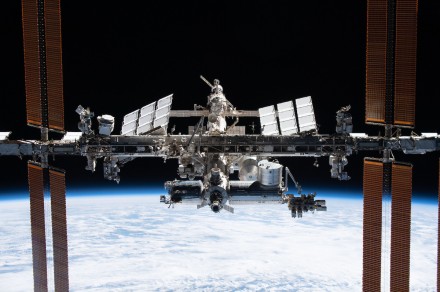On this day 22 years ago, three astronauts arrived at the International Space Station (ISS) to begin what’s turned out to be a continuous human presence in orbit.
On Nov. 2, 2000, Exp 1 crewmates Bill Shepherd, Sergei Krikalev, and Yuri Gidzenko, the first resident station crew members, arrived at their new home in space to begin a four-month stay aboard the orbiting outpost. 🧳🛰️ https://t.co/XUS3gB5JYr pic.twitter.com/isuP4nwjS7
— International Space Station (@Space_Station) November 2, 2022
The day before a Russian Soyuz rocket launched Bill Shepherd, Sergei Krikalev, and Yuri Gidzenko to orbit on October 31, a NASA press release said that October 30, 2000, would be “the last day on which there were no human beings in space.”
And indeed, since then, there has been a continuous presence of international astronauts on the facility as it orbits around 250 miles above Earth.
While years of planning went into the ambitious project to build a space-based facility for human habitation, work began in earnest on November 20, 1998, with the launch of a Russian-made temporary control module called Zarya.
A short time later, on December 4, NASA’s Space Shuttle Endeavor carried to orbit Unity Node 1 — the first American component of the ISS.
Endeavor rendezvoused with Zarya, and using the Shuttle’s robotic arm, captured the Russian module and connected it to Unity.
It was the first of many similar docking maneuvers that gradually built the ISS into a much larger facility that’s now 356 feet (109 meters) end-to-end — one yard short of the length of an American football field, including the end zones.
NASA describes this marvel of modern engineering as “larger than a six-bedroom house,” offering plenty of room for what is usually a crew of around half a dozen astronauts.
Each set of visiting astronauts spends about six months living and working aboard the satellite, conducting science experiments in microgravity conditions, the results of which can benefit humanity; performing maintenance on the station via spacewalks; working out to stay fit; conducting Earth Studies from the facility’s seven-window Cupola module; other enjoying downtime with crewmates.
Despite the successes, challenges in maintaining the aging station means that it’ll eventually be decommissioned, probably in 2031. By that time, however, a new international station should be in orbit, ensuring a human presence in space for a long time to come.
A couple of years ago, to mark the station’s 20th year, Digital Trends shared a collection of videos showing how astronauts live and work aboard the ISS.
Editors’ Recommendations
